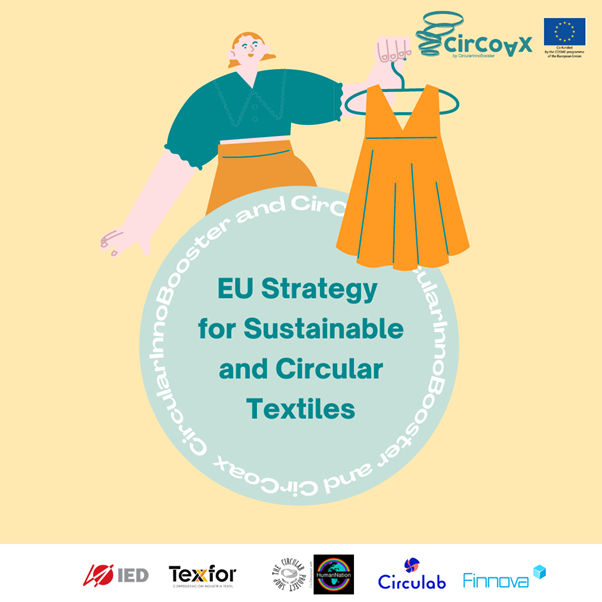
The European Commission has put forward the EU Strategy for Sustainable and Circular Textiles. This is an extremely important strategy, one that is vital not only for improving the textile and fashion industry, but also for Europe and the world at large. By following through on this strategy, the ability to make fashion and textile production less damaging on the environment and more safe and equitable for its workers is within reach. As a working-on-the-ground project, CircularInnoBooster supports this strategy vehemently as a necessary step to work together and help create a better industry, and more importantly a better world. We look forward to continuing to support this strategy and taking it a step further with the positive changes it is sure to bring.
This Strategy for Sustainable and Circular Textiles aims to create a coherent framework and a vision for the transition of the textiles sector whereby: By 2030 textile products placed on the EU market are long-lived and recyclable, to a great extent made of recycled fibres, free of hazardous substances and produced in respect of social rights and the environment. Consumers benefit longer from high quality affordable textiles, fast fashion is out of fashion, and economically profitable re-use and repair services are widely available. In a competitive, resilient and innovative textiles sector, producers take responsibility for their products along the value chain, including when they become waste. The circular textiles ecosystem is thriving, driven by sufficient capacities for innovative fibre-to-fibre recycling, while the incineration and landfilling of textiles is reduced to the minimum.
The key of this strategy will be the implementation, all the stakeholders have to work really hard in order to create a model of successful green and digital transition in the textile sector giving transparent information to the end consumer, specially on product footprint and end of life. It will be important to introduce data from manufacturing (Carbon footprint, chemical use, water footprint, traceability, etc.) and find different solutions to textile waste.
In the last decades Europe has lost its textile industry, traditions and related culture due to globalisation, in search of lower costs, less regulatory barriers and maximising the efficiency and profitability for a few major actors. SMEs and local communities have borne the main brunt of such a strategy – the so called ‘Race to the Bottom’ – either being left out completely or becoming a small cog in BIG RETAIL and industrial value chain. The new strategy must focus on local communities and SMEs to be in the centre, seeking to relocalise the European industry and value chain, developing new European clusters and networks, supporting the circular economy by lowering the environmental footprint and creating shorter value chains, and creating more resilient local economies where value is maintained in the hands of the smaller players – the SMEs that make up 99% of the industrial fabric and contribute to most of the employment in Europe. We should shift from a top down ‘efficiency and economic growth’ strategy to a local and regional ‘eco-effectiveness and resilience’ strategy.
The CircularInnoBooster, through the CirCoAX programme, aims exactly to develop such a collaborative, co-creative and circular approach, applying human and community centred design thinking to boost a clusters and network strategy for SMEs in the Fashion & Textile sector.
